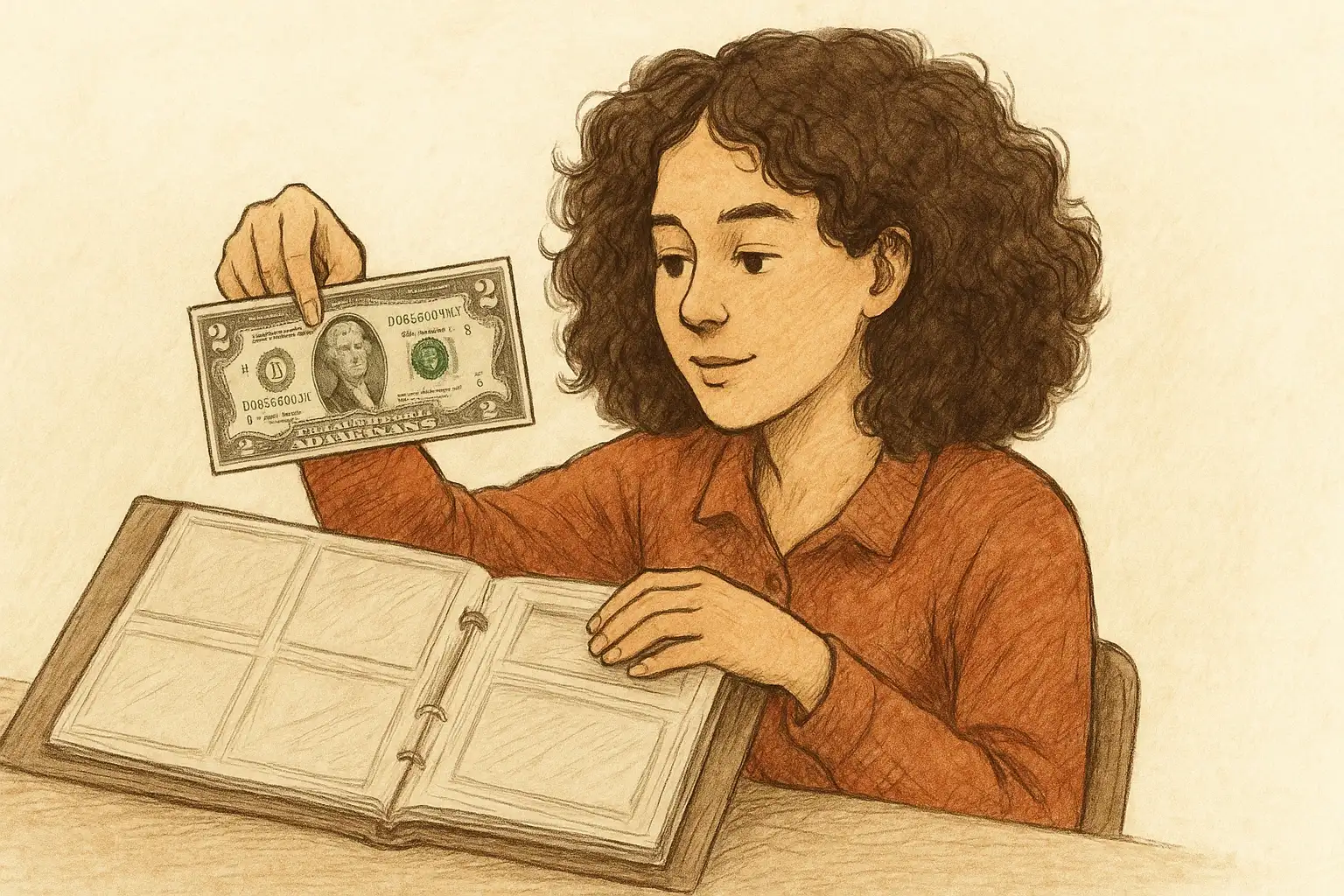What Price Is Hidden Behind a Simple 1976 $2 Bill
.The 1976 $2 bill may look like an everyday note, but its origins and details make it far more interesting to collectors than its face value suggests. Issued during the United States Bicentennial, it marked the return of the $2 denomination as a Federal Reserve Note after years of absence.
Let’s explore the two dollar bill value that you may expect.

Key Design Changes
Reverse redesign – Monticello was replaced with an engraving of John Trumbull’s “The Signing of the Declaration of Independence.”
Obverse continuity – Retained Thomas Jefferson’s portrait, connecting the note to one of America’s founding figures.
Release date – Issued on April 13, 1976, Jefferson’s birthday, adding symbolic significance.
Material and Security Features
Composition – 75% cotton, 25% linen for durability.
Seal & serial color – Green Treasury seals and matching serial numbers, replacing the earlier red-seal design.
Printing scale – Over half a billion bills produced, yet limited circulation due to superstition and unfamiliarity with the denomination.
Why It Was Saved, Not Spent
Despite the large print run, the 1976 $2 bill rarely appeared in everyday transactions. Many people saw it as a novelty or keepsake rather than spending money. This led to:
A large number of uncirculated examples still in existence.
Strong interest from casual and serious collectors alike.
What Determines the Value of a 1976 $2 Bill?
While most 1976 $2 bills still trade close to their face value, certain characteristics can dramatically increase their worth. Collectors look for a combination of condition, rarity, and unique features that set one bill apart from the rest.
1. Condition (Grade)
The single biggest factor is the bill’s grade—how well it has been preserved over time.
Circulated – Worn, folded, or creased bills usually bring only $2–$3.
About Uncirculated (AU) – Minimal handling marks, still crisp, worth around $4–$10.
Uncirculated (UNC) – No folds, bright paper, sharp corners; can range from $5 to $20 for common examples, and more for exceptional ones.
Gem Uncirculated – Perfect centering, vibrant color, flawless paper; often fetches $50+ depending on demand.
2. Serial Numbers
Certain serial number patterns command a premium:
Low numbers – Example: 00000005 or anything under 00000100.
Repeaters – Example: 12121212.
Ladders – Example: 12345678.
Radar notes – Same forward and backward, like 12344321.
Star notes – Replacement bills with a star symbol instead of a final letter; rarer and often more valuable.
Serial Number Type | Example | Potential Value Range |
Low number | 00000005 | $50–$200+ |
Repeater | 12121212 | $30–$150 |
Ladder | 12345678 | $100–$500+ |
Radar | 12344321 | $40–$250 |
Star note | *00005678 | $25–$900+ |
3. Printing Errors
Misprints are rare but highly collectible. Examples include:
Mismatched serial numbers – One side different from the other.
Double printing – Overlapping or blurry ink.
Miscut notes – Paper cut off-center, sometimes showing part of another bill.
Ink smears or missing elements – Any visible printing anomaly.
Error bills vary widely in price, but some can sell for hundreds of dollars depending on severity and rarity.
4. Stamped First-Day Issues
Some 1976 $2 bills were taken to post offices on release day, stamped, and postmarked. While these usually sell for just slightly over face value, they can be more desirable if tied to historic locations or special Bicentennial events.

Protecting, Authenticating, and Enhancing Your Collection
Owning a 1976 $2 bill is more than holding a piece of currency—it’s preserving a slice of American history. To keep its value intact, collectors follow a few best practices:
1. Proper Storage
Use currency sleeves – Acid-free, archival-quality holders prevent wear and environmental damage.
Avoid folding – Any crease or bend can lower the grade significantly.
Control the environment – Store in a cool, dry place away from direct sunlight to prevent fading.
2. Authentication & Certification
While most 1976 $2 bills are genuine and easy to verify, rare serial numbers and error notes benefit from professional grading and authentication.
PCGS Banknote and PMG (Paper Money Guaranty) are two leading grading services.
A certified grade provides both credibility and a market boost when selling or insuring the note.
3. Integrating Modern Tools for Collectors
Even though the Coin ID Scanner app focuses on coins rather than paper currency, it’s a valuable companion for anyone in the numismatic world. Available on Android and iOS, it offers:
Photo-based identification of coins, complete with details like mint year, metal composition, weight, and market value.
Digital collection management to organize, track, and value your holdings.
Access to a global database of over 187,000 coins.
Pairing tools like this with your paper money collection can help you manage your overall numismatic portfolio more effectively, whether your interests lean toward coins, bills, or both.
4. The Lasting Appeal of the 1976 $2 Bill
What makes the 1976 $2 bill special isn’t just its design or its Bicentennial origin—it’s the connection it offers to a historic moment in U.S. currency. Whether it’s tucked into a collector’s album, displayed in a frame, or stored in a safe deposit box, it remains a conversation starter and a tangible reminder of America’s 200th birthday.
A “simple” $2 bill from 1976 can be worth anywhere from its face value to several hundred dollars, depending on condition, rarity, and unique features. By protecting your notes, authenticating special finds, and using smart tools to manage your collection, you can ensure that this Bicentennial keepsake continues to hold—and perhaps even grow—its value over time.
